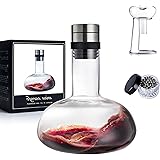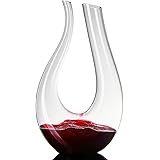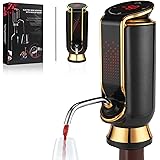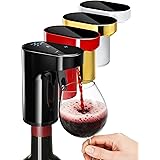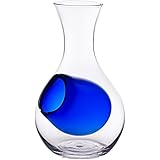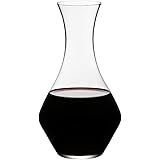Mastering Wine Basics: A Bartender’s Essential Guide
Do you ever find yourself confidently mixing cocktails, yet feel a slight hesitation when a guest asks for a wine recommendation? The world of wine, as the accompanying video brilliantly highlights, is vast and can seem intimidating at first. However, arming yourself with fundamental wine knowledge is a powerful tool for any bartender, transforming service into an exceptional experience and building genuine rapport with your patrons. This comprehensive guide will expand upon the video’s insights, providing you with a deeper understanding of wine basics, helping you confidently navigate varietals, regions, and styles.Every skilled bartender understands that their role extends beyond crafting drinks; it involves curating memorable moments. Imagine if you could not only pour a perfect glass of Cabernet Sauvignon but also offer a brief, insightful comment about its rich body or suggest an ideal food pairing. This level of service elevates a simple transaction into an engaging interaction, enhancing the guest’s perception of both you and your establishment. Learning about wine empowers you to educate and guide, ensuring every guest feels heard and expertly served.
Old World vs. New World Wines: A Tale of Terroir and Innovation
The video introduced the concept of Old World and New World wines, a fundamental distinction in understanding wine styles. Old World wines, hailing from regions like France, Italy, and Germany, are deeply rooted in tradition and emphasize “terroir”—the unique environmental factors, including soil, climate, and topography, that influence a wine’s characteristics. These wines often exhibit more earthy, mineral, and savory notes, with higher acidity and a focus on subtle elegance. Producers in these regions typically adhere to strict regulations regarding grape varietals and winemaking practices, reflecting centuries of history and specific regional identities.
Conversely, New World wines emerge from countries with a more recent history of commercial winemaking, such as the United States, Australia, and Chile. These regions often embrace innovation, focusing on fruit-forward flavors, riper profiles, and bolder expressions. Winemakers in the New World have more freedom to experiment with grape varietals and techniques, often prioritizing the varietal itself rather than a specific geographical appellation. Understanding these differences helps bartenders anticipate a guest’s preference; someone asking for an “Old World” style might be looking for something more nuanced and less overtly fruity, while a “New World” preference usually signals a desire for bold, accessible flavors.
Classifying Wine: Grape Varietal vs. Place of Origin
With over 1,300 confirmed wine varieties globally, knowing how they are named helps demystify the label. The video explained that wines are primarily named in two ways: by their grape varietal or by the place where the grapes grew. When a wine is named after its grape, such as a Chardonnay or a Merlot, you know immediately what primary grape was used in its production. This common approach simplifies selection, especially for guests who have a favorite grape they enjoy.
However, many esteemed wines are named after their region, requiring a deeper understanding to know the grape. For example, Chianti is a renowned Italian wine, but it’s made predominantly from the Sangiovese grape. Similarly, Bordeaux, a classic French wine, is a blend of several grape varietals, most commonly Cabernet Sauvignon and Merlot. Learning these regional names and their associated grapes is key to truly mastering your wine knowledge. As a bartender, knowing this distinction allows you to confidently guide guests who might ask for a “Burgundy” (which is typically Pinot Noir for red, Chardonnay for white) instead of a specific grape.
Discovering Popular White Wine Varietals
White wines are celebrated for their refreshing qualities and versatility, often showcasing lighter body and vibrant acidity. The most popular styles you’ll frequently encounter as a bartender include Chardonnays, Pinot Grigios, Sauvignon Blancs, and Rieslings.
-
Chardonnay: This varietal is exceptionally versatile, ranging from crisp and unoaked (often found in Chablis) to rich and buttery, with notes of vanilla and toast from oak aging. An unoaked Chardonnay typically offers green apple and citrus flavors, while an oaked version might present tropical fruit and creamy textures. Guests often enjoy Chardonnay with poultry, creamy pasta dishes, or richer seafood.
-
Pinot Grigio: Known for its light body and crisp acidity, Pinot Grigio offers refreshing flavors of lemon, green apple, and sometimes a hint of almond. It’s an excellent choice for those seeking a dry, easy-drinking white wine, pairing wonderfully with lighter fare like salads, fresh seafood, and light appetizers.
-
Sauvignon Blanc: This varietal is distinctive for its herbaceous and sometimes “grassy” notes, accompanied by vibrant acidity and flavors of grapefruit, passionfruit, and sometimes a touch of minerality. It’s particularly refreshing and pairs exceptionally well with goat cheese, oysters, and light chicken dishes, or anything that benefits from a bright, zesty contrast.
-
Riesling: Riesling is incredibly aromatic and can range from bone-dry to lusciously sweet, always maintaining a high acidity. It often presents notes of lime, apricot, and petrol, making it a unique and complex choice. Dry Rieslings are fantastic with spicy Asian cuisine, while sweeter versions complement fruit-based desserts or can be enjoyed on their own.
Unveiling Popular Red Wine Varietals
Red wines, characterized by their diverse flavor profiles and varying body, are made from dark-skinned grape varietals. The grape skins remain during fermentation, imparting color, tannins, and complex flavors. Common red wines you’ll frequently serve include Cabernet Sauvignon, Chianti, Merlot, Pinot Noir, and Zinfandel.
-
Cabernet Sauvignon: Often referred to as the “king of red grapes,” Cabernet Sauvignon is full-bodied, rich, and tannic, with flavors of blackcurrant, cedar, and sometimes mint. It’s a classic pairing for red meats, particularly steak, lamb, and hearty stews, due to its robust structure that stands up to strong flavors.
-
Merlot: Generally softer and more approachable than Cabernet Sauvignon, Merlot offers plush fruit flavors of plum, cherry, and sometimes chocolate or mocha notes. It’s a versatile choice that pairs well with roasted chicken, pork, and many pasta dishes, appealing to guests who prefer a smoother red wine experience.
-
Pinot Noir: Lighter-bodied and elegant, Pinot Noir is known for its delicate aromas of red berries (cherry, raspberry), earthy undertones, and often a hint of spice. It’s a notoriously difficult grape to grow but yields exquisite results. Pinot Noir shines with salmon, duck, mushrooms, and lighter red meats, providing a sophisticated accompaniment.
-
Zinfandel: This varietal typically produces bold, jammy wines with high alcohol content and flavors of blackberry, black pepper, and sometimes a smoky finish. Zinfandel pairs excellently with barbecue, grilled meats, and spicy dishes, making it a favorite for robust flavors.
-
Chianti: As a regionally named wine from Tuscany, Italy, Chianti is primarily made from the Sangiovese grape. These wines are known for their high acidity, savory notes of sour cherry, tomato leaf, and often a rustic, earthy quality. Chianti is the quintessential pairing for Italian cuisine, especially tomato-based pasta dishes, pizza, and cured meats.
It’s worth noting, as the video mentions, that studies have shown a link between moderate consumption of red wine and good heart health. The latest findings suggest that components like resveratrol, found in grape skins, may contribute to these benefits, adding another dimension to appreciating a glass of red wine responsibly.
Beyond Still Wines: Rosé, Sparkling, Dessert, and Fortified Delights
The world of wine extends far beyond your typical reds and whites, encompassing a fascinating array of styles that cater to diverse tastes and occasions. As a bartender, understanding these distinct categories — Rosé, Sparkling, Dessert, and Fortified wines — allows you to broaden your recommendations and enhance your guests’ experiences.
The Charm of Rosé Wines
Rosé wines, with their inviting pink hue, are often referred to as “pink” or “blush” wines. While they can be made by blending red and white wines, the most traditional method involves limited skin contact. Dark grape varietals are crushed, and the skins remain in contact with the juice for only a few hours (rather than days or weeks for red wine), imparting a delicate pink color before being removed. While the video mentions most rosés are sweet, many modern rosés, particularly from regions like Provence, France, are dry, crisp, and refreshing, offering subtle notes of red berries and citrus. White Zinfandel and White Merlot are indeed popular sweeter styles, but don’t overlook the vibrant spectrum of dry rosés perfect for warmer weather or lighter meals.
The Effervescence of Sparkling Wines
Sparkling wines, defined by their delightful carbon dioxide bubbles, bring a celebratory touch to any occasion. While many people colloquially use “Champagne” to refer to all sparkling wines, the video correctly emphasizes that true Champagne is a specific type of sparkling wine. By law, only wines made from grapes grown in the Champagne region of France and produced according to strict guidelines can bear this distinguished name. However, the world offers many other fantastic sparkling options, each with its own character.
-
Cava: This Spanish sparkling wine, made using the traditional method (like Champagne), often offers crisp acidity and flavors of green apple and citrus.
-
Prosecco: From Italy, Prosecco is typically lighter, fruitier, and made using the Charmat method, resulting in vibrant bubbles and notes of pear, apple, and floral undertones.
-
Crémant: French sparkling wines made outside the Champagne region, like Crémant de Bourgogne or Crémant d’Alsace, also use the traditional method and offer excellent value with diverse flavor profiles.
Indulging in Dessert Wines
Dessert wines are, as their name suggests, characterized by their high sugar content, making them a popular choice to accompany or serve as a dessert. These wines achieve their sweetness through various methods, such as late harvesting the grapes (allowing them to over-ripen on the vine), noble rot (a beneficial fungus that concentrates sugars), or freezing the grapes on the vine (Ice Wine). Ice Wine, for instance, produces incredibly concentrated, sweet, and acidic wines with intense fruit flavors. Other popular styles like Lambrusco (often sparkling and sweet) and Vermouth (an aromatic, fortified wine, often used in cocktails but can be a dessert wine depending on its style) showcase the variety within this category. Offering a dessert wine can be a perfect way to conclude a meal, providing a sweet finish without being overly heavy.
The Richness of Fortified Wines
Fortified wines distinguish themselves by having brandy or other spirits added to the grape juice during their production. This addition prematurely stops the fermentation process, leaving a higher amount of residual sugar in the wine, resulting in a higher alcohol content and often a richer flavor profile. The video notes that some fortified wines, like Port and Sherry, were originally created in the 17th century to ensure the wine survived long sea voyages. Port, from Portugal, is typically sweet and full-bodied, ranging from ruby (fruity) to tawny (nutty and aged). Sherry, from Spain, offers a wide spectrum from bone-dry (Fino) to lusciously sweet (Pedro Ximénez), often with complex nutty and oxidative notes. These wines are excellent as aperitifs or digestifs, offering a unique and sophisticated experience.
The Journey to Becoming a Wine Savant: A Sommelier’s Path and Bartender’s Growth
The world of wine is indeed vast, as highlighted by the existence of Sommeliers – distinct professionals who specialize solely in wine. A Sommelier’s role extends far beyond merely uncorking and pouring fine wine. They often meticulously develop a restaurant’s wine list, are responsible for ordering inventory, and ensure its proper storage and presentation. While there are no mandated educational courses to become a wine Sommelier, numerous certification levels are available, each requiring extensive study and rigorous tasting exams. This dedication underscores the depth of knowledge available and the continuous learning involved in the wine industry.
For a bartender, while you may not aspire to be a certified Sommelier, embracing a similar spirit of continuous learning about wine will significantly elevate your craft. The best way to deepen your understanding and appreciation, as the video suggests, is to taste it. Learning about wine is much like cultivating an appreciation for music or art; the pleasure you derive is often proportionate to the effort you invest. The more you fine-tune your wine tasting sensory abilities, the better equipped you become to understand and articulate the nuances and details to your customers. Investing time and effort in training your palate is not only incredibly rewarding professionally but also a genuinely enjoyable personal journey.


